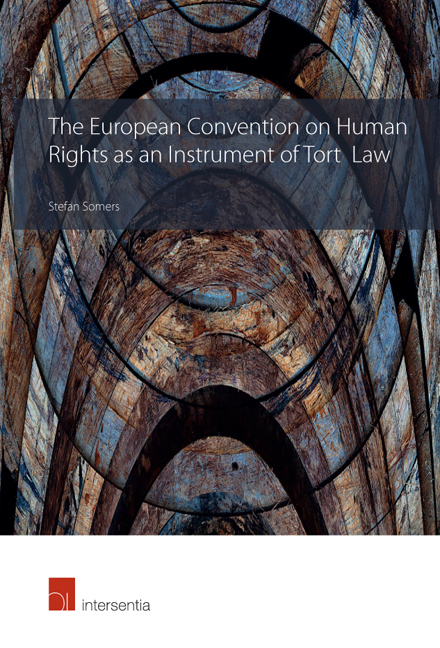Book contents
- Frontmatter
- Dedication
- Contents
- List of Cases
- Introduction
- Chapter 1 Human Rights in Horizontal Relations
- Chapter 2 Articles 13 and 41 ECHR and State Liability
- Chapter 3 The Interaction between Articles 13 and 41 ECHR and Liability in Horizontal Relations
- Chapter 4 Tort Liability as a Violation of Human Rights
- Chapter 5 Article 41 as an Alternative Tort Law System
- Chapter 6 General Outline of Article 41 of the Convention
- Chapter 7 Damages
- Chapter 8 Fault and Blameworthiness
- Chapter 9 Causality
- Chapter 10 Restitution
- Conclusion
- Bibliography
- About the Author
- Frontmatter
- Dedication
- Contents
- List of Cases
- Introduction
- Chapter 1 Human Rights in Horizontal Relations
- Chapter 2 Articles 13 and 41 ECHR and State Liability
- Chapter 3 The Interaction between Articles 13 and 41 ECHR and Liability in Horizontal Relations
- Chapter 4 Tort Liability as a Violation of Human Rights
- Chapter 5 Article 41 as an Alternative Tort Law System
- Chapter 6 General Outline of Article 41 of the Convention
- Chapter 7 Damages
- Chapter 8 Fault and Blameworthiness
- Chapter 9 Causality
- Chapter 10 Restitution
- Conclusion
- Bibliography
- About the Author
Summary
Since the Court aims to award human rights victims full compensation of their damages on the basis of Art. 41, the question arises whether it should develop a notion of damages that is similar to the notion of damages in national tort law. An inquiry into this question will have to develop insight on the functions of damages, starting from the idea that the primary aim of damages in national tort law is to compensate the suffered loss of an injured person. Examining this question will also shed light on the question whether the Convention influences the concept of damages in national tort law.
DEFINITION AND FINDING OF DAMAGES
DEFINITION OF DAMAGES
The text of Art. 41 of the Convention does not mention the notion of damages. The provision only stipulates that the ECtHR has the authority to award a just satisfaction if the Convention is violated and if the internal law of the state concerned only allows partial reparation to be made. The ECtHR does not provide a definition of damages in its jurisprudence either. It only gives a sort of definition of restitution, from which one might deduce a definition of damages. The Court in some cases states that the full compensation of the damages exists in putting an applicant as far as possible in the situation equivalent to the one in which he would find himself had there not been a breach of the Convention.
Assuming that a full compensation redresses all the suffered damages, a definition of damages can be deduced from this wording that reads as follows: damages are the difference between the actual situation of the victim of a human rights violation and the situation in which he would find himself had there not been a breach of the violation. In essence, this definition reduces the notion of damages to a comparison between two situations: if there is a difference between the two situations, damages exist. Apart from that, the Court does not provide a substantial definition of damages. One might argue that damages can be defined as an interest for the reason that there seems to be a link between the application of Art. 41 and the admissibility criteria according to which an applicant must have an interest in bringing a case before the Court.
- Type
- Chapter
- Information
- Publisher: IntersentiaPrint publication year: 2018



